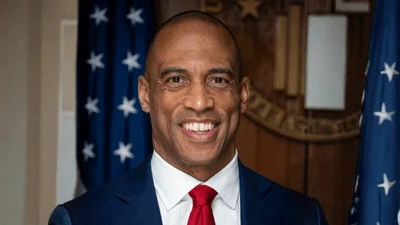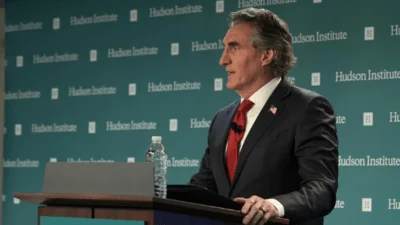U.S. economic data through September 30, 2025, indicate that growth strengthened in the third quarter, with steady business investment and consumer demand. Stock markets reached record highs during this period and have continued to climb since then. Earnings growth remained stable, while yields on U.S. Treasury notes and bills declined over the quarter.
Labor markets stabilized in July and August. Employment growth was modest but consistent with the previous quarter. Both forced deportation and voluntary self-deportation of illegal immigrants led to a reduced labor supply, but labor demand also fell, keeping the overall labor market balanced. Companies are planning for output growth by focusing on productivity improvements rather than hiring.
Private-sector forecasters estimate that total economic growth remained solid in the third quarter. The Wall Street Journal’s quarterly survey published on October 12, 2025, reported a median forecast for third-quarter GDP growth at an annual rate of 2.7 percent—an increase from the July survey's median of 1.0 percent annualized growth. This revision reflects strong private final domestic demand shown in monthly data.
Real personal consumption expenditures rose at a 2.8 percent annual rate in the first two months of the quarter, showing slight improvement from the second quarter. Business shipments of core goods increased to a 3.3 percent annualized rate in July and August compared to the previous quarter. Reports suggest ongoing research and development for artificial intelligence is driving business spending on intellectual property products.
A lapse in government funding has delayed some surveys and reports used to estimate GDP for the third quarter, so official data will not be available until normal operations resume.
Labor market data showed little change in job creation or unemployment rates early in the third quarter. Total payroll job growth averaged 51,000 per month during July and August after averaging 55,000 per month during the second quarter. The slower pace partly reflected federal government job losses—a monthly average decrease of 12,500 federal jobs—while private sector job creation held steady at 58,000 jobs per month.
Unemployment rates fluctuated between 4.0 percent and 4.2 percent from May 2024 to July 2025; it rose slightly to 4.3 percent in August, with an average of 4.29 percent for July and August—just below the Congressional Budget Office’s estimate of non-cyclical unemployment (4.4 percent). The overall labor force participation rate decreased slightly to an average of 62.3 percent in July and August due mainly to lower participation among younger workers aged 16–24; however, prime-age participation (ages 25–54) increased slightly to an average of 83.6 percent.
Job openings eased somewhat but remained stable relative to available unemployed workers: there were about seven million job openings each month during July and August (down from earlier quarters), with a ratio of one vacancy per unemployed person.
Inflation stayed above target levels through September as measured by headline consumer price index (CPI), which was up three percent over twelve months ending September 2025; this partly reflected higher prices late last year into early this year before moderating more recently.
Energy prices increased at an average monthly rate of four-tenths of a percentage point in the third quarter because gasoline costs rose further; food prices also saw moderate increases both for groceries and dining out.
Core CPI inflation averaged three-tenths of a percentage point monthly in Q3; core goods prices began rising last fall leading to core goods inflation reaching an annualized rate of one-and-a-half percent over twelve months ending September.
Rent-related inflation slowed somewhat compared with prior years; rent inflation was up by about three-point-seven percent annually—the slowest pace since December 2021—while non-housing service inflation picked up slightly due mostly to airfares and lodging away from home.
There are notable differences between CPI-based measures and those based on personal consumption expenditures (PCE). Over twenty years CPI inflation has typically run about thirty-six basis points higher than PCE inflation annually; as of August headline PCE inflation was estimated at two-point-seven percent annually while core PCE inflation stood at two-point-nine percent.
Looking ahead, economists see both upside and downside risks but generally consider recession risk low: "According to The Wall Street Journal’s quarterly survey of economists, the median economist projected a 33 percent chance of a recession in the next twelve months," little changed from prior estimates.
The ongoing federal government shutdown—which had lasted over four weeks as of October end—is expected to reduce current-quarter GDP via lost output from furloughed workers as well as secondary effects like delayed paychecks affecting consumption patterns among government employees and contractors.
Declining government employment may weigh on future labor market figures as many federal employees opted into administrative leave programs set to result in separations after September unless postponed or offset by new jobs elsewhere.
Treasury officials continue monitoring private-sector labor developments closely; while employment growth has slowed since early this year there is no evidence that this is due primarily to weak GDP or falling aggregate demand—instead both supply (due partly to immigration enforcement) and demand appear softer simultaneously keeping hiring subdued without sharply increasing unemployment rates.
Geopolitical uncertainty—including ongoing conflict involving Ukraine—continues adding volatility especially regarding energy prices which can quickly feed through into broader consumer costs such as food or travel expenses when oil or gas spikes occur suddenly.
Investment by businesses into artificial intelligence remains significant—with potential for major productivity gains particularly across service industries—but timelines remain uncertain: if integration proves transformative it could permanently raise productivity paths though it might also disrupt sectors where adaptation lags behind technology advances.
"Thus far in President Trump’s second term, the Administration has successfully stewarded major fiscal legislation to prevent a historic tax increase, and it continues to seek further cuts to federal spending and incentivize productive business investment," according to the statement issued today.
"Ongoing trade negotiations are transforming trade relationships, which will put American citizens first and prevent other countries from taking advantage of the openness of our economy."
"Moreover, supply-side policies, deregulation, and other reforms will protect the American consumer from high inflation, supply-chain disruptions, and the destabilizing potential of geo-political strife while freeing up investment funds for more productive uses and encouraging a significant increase in domestic energy production."
"In just a short six months, the Administration has made extensive progress to enact an agenda that will bring prosperity to all Americans."





